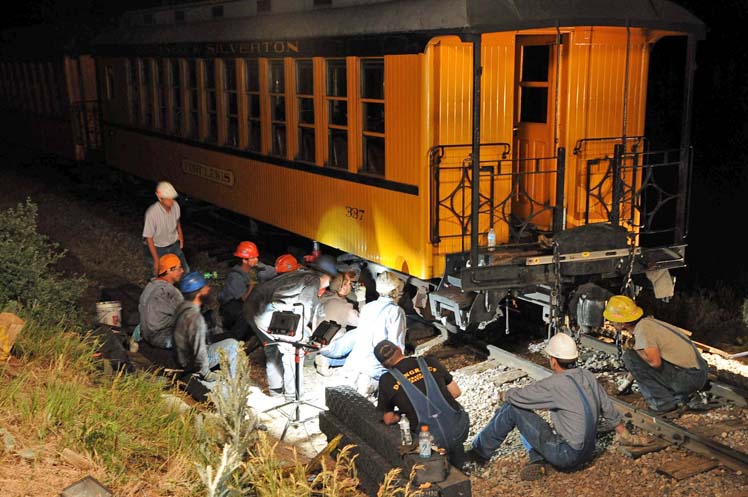
of Train Derailment
Hermosa Colorado USA - The Durango & Silverton Narrow Gauge Railroad derailment late Saturday afternoon was the second worst incident in more than 30 years, and the second in one day on the tracks.
The train was returning from Silverton when two passenger cars came off the rails around 16:30, likely because warm weather damaged the rails, railroad spokesman Christian Robbins said Monday.
No one was injured in the derailment and crews worked until the early morning hours to get the rails ready for a train that departed downtown at 08:00, Sunday, he said.
Former train engineer Greg Cravatta was on the first car when it started to shake and vibrate and he realized it had derailed.
"I thought, my god, don't tip over, don't tip over," he said.
Cravatta shouted at the brakeman to pull the air brake.
"He pulled that air brake immediately, and we stopped, and it was no big deal," he said.
The conductor and the head brakeman pulled the air brake nearly simultaneously, which is standard procedure to stop the train as soon as possible, Robbins said.
Cravatta, 64, was on the train with his wife and two friends, and they were a bit shook up after the train came to a stop.
Cravatta estimated his car traveled 100 feet without all its wheels on the track.
When the car stopped, it decoupled from the train behind it, which is not unusual when the air brake is pulled, he said.
The railroad classifies it as one of the worst derailments in recent history because two cars were involved and they were significantly off the track, Robbins said.
Most passengers returned to the depot on a bus, except for people with disabilities who traveled on a one-car train back to the depot, Robbins said.
A second train returning from Silverton stopped in Hermosa and those passengers were also taken by bus to the depot, he said.
The company gave partial refunds to those who requested them, but most people did not ask for one, he said.
Earlier on Saturday, a car on the T-Rex Express, which runs from the depot to Hermosa and back, derailed around 12:30 near the Durango Fish Hatchery and Wildlife Museum on the return trip.
No one was injured during the derailment and some people chose to remain on the train while workers spent 20 minutes putting the car back on the rails, Robbins said.
The railroad provided a van for a handful of people who wanted to return to the depot immediately.
Others chose to walk because the derailment happened in town, he said.
The railroad has never had two derailments on the same day before, he said.
The T-Rex Express derailment was caused by a problem with the train car, not the track, he said.
The company spends millions of dollars each year maintaining the track, he said, in part because the hot summers and cold winters damage it and caused the ground beneath it to shift.
The company keeps the track as smooth as possible, but derailments happen.
"We'll have derailments almost every year, the passengers don't even recognize it," Robbins said.
Cravatta, a train engineer for 41 years for the Metra commuter train outside Chicago, commended the train staff for its quick reaction.
"We avoided a big emergency quickly," said Cravatta, who was reached by phone on the way to Bryce Canyon and Zion national parks.
Passengers sometimes don't know why the train stopped during a derailment because the train travels slowly, usually 10 to 12 miles an hour.
The rocking motion of the train also makes it hard for some people to notice something is wrong, Robbins said.
Generally, it takes an hour to an hour and a half to put a train car back on the tracks, he said.
During the worst derailment in the last 30 years, a train car turned on its side near Rockwood Station, the last point of highway access on the route between Durango and Silverton, he said.
He did not have any details about the incident but speculated that there likely were injuries.
In the last three years, one person needed medical attention after getting a cinder in an eye and someone had to leave the train for a personal medical issue.
The company emphasizes safety by requiring staff to attend an organizational safety meeting every week.
Train crews review a safety rule every day, he said.
No one has died riding the train in its 136-year history, Robbins said.
Mary Shinn.
provisions in Section 29 of the Canadian
Copyright Modernization Act.


